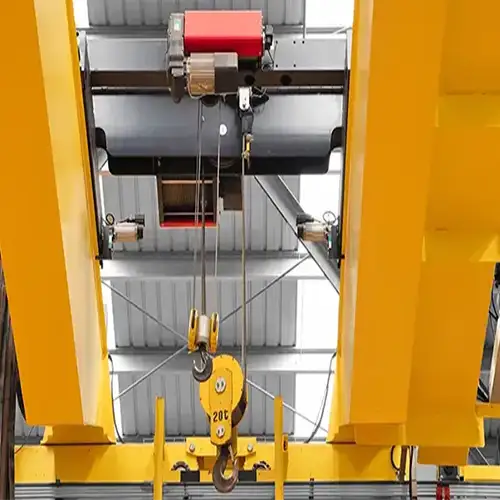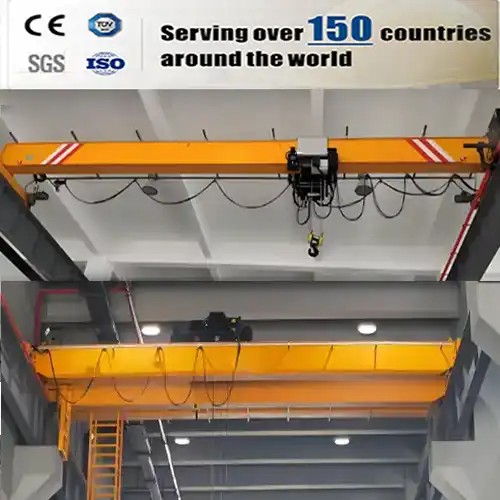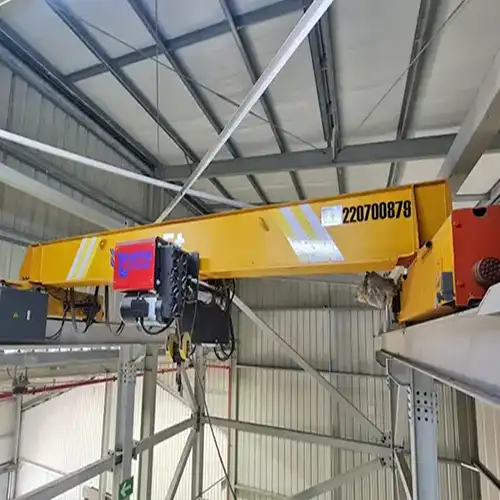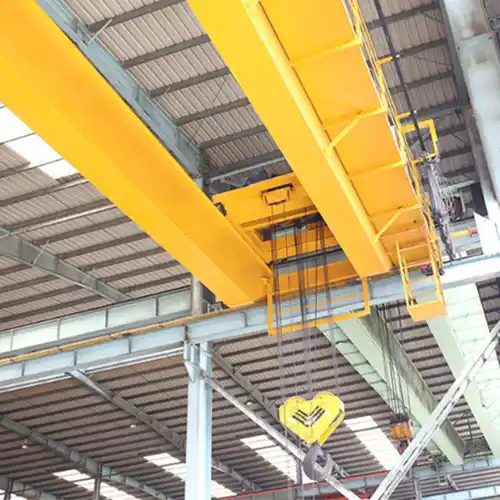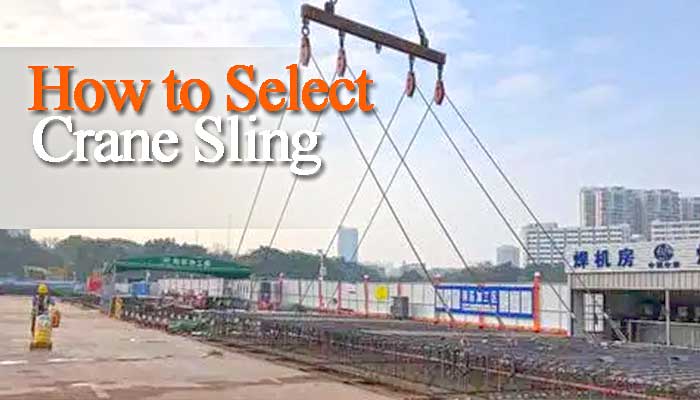
How to Select Crane Sling for Your Overhead Crane & Gantry Crane?
Cranes sling Overview:How to select right sling for your overhead crane & gantry crane? Why Sling hitch, Capacity& Edge Protection is important? Check crane sling overview now!
All crane lifting operations necessitate the use of rigging. When planning for a lift, there are numerous variables to consider. The elements and techniques listed below should be considered while planning a lift to guarantee good rigging. This information is provided for informational reasons only and is not intended to be a complete guide to lifting and rigging. It should not be used in place of a thorough review and understanding of applicable regulatory rules.
Sling Hitch
The sort of load you're lifting can influence the type of hitch you need to employ while rigging a load. A vertical hitch, also known as a straight line hitch, uses a single sling with one end attached to the weight and the other to the hoist, crane, or lifting equipment. This hitch is perfect for load distribution that is evenly distributed and easy to balance. The Double Line Hitch is similar to the Single Line Hitch, but it employs two slings that are attached to the lifting equipment and the weight at different points. This hitch is appropriate for heavier loads that are difficult to balance with a single sling.
To stabilize the long weight, this rigging method uses a twin line arrangement with two choker hitches.
A Basket Hitch is made up of a single sling that wraps around the weight and is connected to the hoist, crane, or other lifting device on both ends. The Choker Hitch also uses a single sling passed around the cargo, but one end is hooked to the lifting apparatus while the other end is looped back to the sling itself.
Basket and choker hitches are ideal for loads with no direct attachment points, like huge pipes or shafts. Both types can also be used to raise loose loads by creating a double wrap basket or choker hitch by wrapping the sling around the cargo. For loose loads, such as a bundle of pipes, double wrap hitches are ideal. To stabilize longer loads, basket and choker hitches can be utilized with a lifting beam. For further information on the various types of sling hitches, contact the sling manufacturer.
Capacity
One thing that everyone understands is vital for cranes is lifting capacity. You can't raise 15 tons with a crane that can only lift 10 tons. This rule also applies to slings. The maximum weight capacity of every rigging sling is determined by the manufacturer, and different types of hitches can alter that capacity.
The normal capacity of any sling is usually determined by a straight line hitch. The capacity of the sling will most likely fluctuate if you use it in other ways. When two slings are used for a double line hitch, for example, the capacities of the individual slings are combined to create a larger capacity. However, when the angle between the slings rises, the capacity can be reduced.
The sling is loaded at an angle because both ends of the basket hitch are connected to the same location, and the capacity is significantly reduced.
A vertical basket hitch, which connects both ends vertically to distinct connecting points, will often improve the sling's capacity. Because the slings are loaded at an angle, the capacity may be reduced if both ends are attached at a single location. As the angle between the legs grows, the capacity drops even more. The capacity of a choker hitch is nearly always less than the sling's regular capacity.
All of these factors have an impact on a sling's capacity. Check with the sling manufacturer for sling capacities in various hitch configurations to ensure loads are rigged securely.
Edge Protection
Lifting a load without edge protection can be risky, even if you have the proper sling capacity and hitch. If left uncovered, any sling that comes into touch with a protrusion, edge, corner, or rough or abrasive surface during a lift might be harmed.
A sharp edge can cut into a sling and cause failure during a hoist if there is no edge protection. Even if a sling does not fail during a lift, it can be permanently damaged, making future lifts more likely to fail.
Edge protection should be provided between sharp edges and the sling to prevent lasting injury. To soften sharp edges, rubber pads, separate sling webbing segments, wire mesh pads, and even specially built cushioning might be placed over a load. With enough padding thickness, these types of edge protection can substantially decrease the harm potential. To convert a sharp edge to a rounded surface, specialized edge protection equipment is also available. By removing the sharp edge, this equipment can decrease the risk of sling abrasion.
When it comes to rigging big loads, the safest rigging methods must be followed. When lifting a cargo, the sort of hitch you employ, the sling capacity, and edge protection needs are just a few of the things to think about. Many other elements must be addressed, including the load's size and center of gravity, available lifting points, height constraints, below-the-hook lifting systems, and so on. Every lift plan should be reviewed by a Qualified Person to ensure that all safety standards are satisfied and all applicable regulations are followed. Contact an OSHA-certified Qualified Rigger training service provider, which can be found online, for more information on safe rigging procedures.
